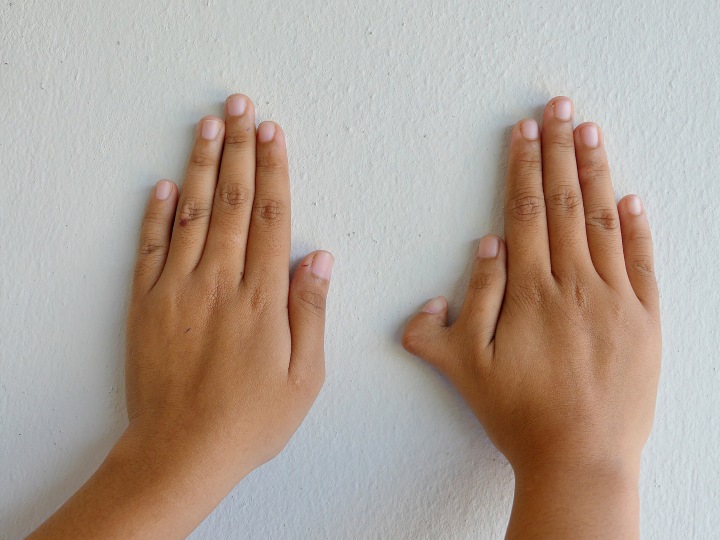Limb deformities are pretty common among children. Raising a child with deformities is challenging because of the chronic pain and disability that can result in depression, social isolation, and anxiety. As a parent, you’d want to do anything to protect your child.
Luckily, Idaho Falls pediatric orthopedics and similar hospitals can rescue you. They understand that your child’s body is consistently developing, and their muscles, joints, and bones need special care. Thus, your child can get a specialized treatment unique to them based on their personal development and growth.
Limb deformities in children can be complex. Some deformities get better as your child grows, and others get worse, resulting in an increased variation in length, limb rotation, and abnormal angulation. Once you see irregularities in your child’s limbs, you must visit a hospital that specializes in orthopedics. They can prescribe various treatment options, and you can pick one based on their advice. The following is a complete guide to limb deformities:
What Are Limb Deformities?
Limb deformities are abnormalities or problems in the bone structure of your child’s arms or legs. They can be on the entire limb or a part of it and are usually characterized by distortion, unnatural form, or irregularity in your child’s leg or arm. Some of these problems occur during birth when the baby is born with abnormalities. But others are caused by injuries, diseases, and traumas that can disturb bones’ normal development, resulting in skeletal abnormalities.
Limb deformities can be visually apparent, causing movement difficulties or pain. The severity of a limb deformity can be measured using the following guide:
- Visible deformity but no symptoms: It can either be in group A, where there’s a low risk of progression and complications in the future, or group B, which has a high progression risk and complications in the future.
- Visually obvious deformity with symptoms: This is group C, and you can measure its severity based on your child’s symptoms, like limping, pain, inability to walk, and many others.
If your child is in group A, you can manage the deformity by monitoring any changes, but if they’re in B and C, you need the help of a professional doctor. Remember, if your child’s limb deformity isn’t assessed and corrected early enough, it can result in secondary complications like scoliosis, arthritis, and contractures.
Symptoms Of Deformities
Limb deformities can have visible or subtle symptoms. The limbs can appear abnormal, or they could be missing altogether. Your pediatrician continuously evaluates your child’s limbs during routine checkups, and they can always find these symptoms; the following are the most prevalent signs of limb deformity:
- Missing limb
- Difficulties with development like motor skills
- The length difference between one limb and the other
- Legs bowing outward when they stand instead of being straight
- Abnormally shaped legs
- Failure of some parts of the limb to separate, primarily the toes and fingers
- Knock knees where when your child stands, the knees touch but ankles don’t
- Abnormal curving of one of the lower legs
- Duplication in the form of extra toes and fingers
- Needing help with everyday activities like self-care
- Limitations in movements during sports or activities
- Pain in the knee, ankle, hip, or back
- Unusual rotation of limbs, walking gait, or walking on toes
Outward symptoms of limb deformities in your child are easy to identify. If you see any of these symptoms in your child, speak with a doctor to receive a diagnosis and a treatment plan.
Causes Of Limb Deformities
Limb deformities can be present either when you’re born or as a result of trauma. Those abnormalities present during birth can be diagnosed immediately through a physical examination, while others can be based on observed symptoms.
Deformities your child is born with are known as congenital limb deformities. Although they’re not fully understood, the risk factors are:
- Use of drugs like tobacco during pregnancy
- Exposure to chemicals, viruses, or medication before birth
- Constriction band syndrome. It’s where there’s an early rupture of the amnion forming bands that become tangled, causing immobilization, amputations, constriction, and other deformities to the limbs of the fetus
- Genetic abnormalities like mechanical forces that affect the baby’s development in the uterus
- A secondary result of other anomalies like gastroschisis, heart defect, or omphalocele
Because of these risk factors, your child could have any of the following congenital deformities:
- Flat foot: It’s also referred to as pes planus, the deformation of the feet where the arch that runs lengthwise along the sole of your child’s foot has collapsed or not formed at all
- Talipuseqinovarus: This is commonly known as clubfoot and the most common limb deformity. Your child’s feet become twisted downward and inward at the ankles such that the ankle or side of the foot touches the ground instead of the sole.
- Calcaneovalgus foot: It’s a postural deformity at the ankle joint. It causes the foot to appear bent upwards. It’s caused by the abnormal position of the baby in the womb.
- Congenital Vertical talus (CVT): This is a rare condition in which the heel bone (talus) and ankle bone of your child’s feet are positioned abnormally. It gives it a rigid flat foot that has a rocker bottom appearance. The child’s hindfoot points towards the floor, and the forefoot points upward. It commonly occurs with other neuromuscular deformities like arthrogryposis (presence of joint contractures at birth) and spina bifida.
- Leg length discrepancy: This is a deformity in which one leg is longer than the other. Your child can have issues with walking patterns and posture. It can be associated with pain in the ankle, back, and hip knee. It’s often corrected using reconstructive surgery called limb lengthening.
- Tarsal coalition: This developmental deformity occurs because there’s an abnormal connection between two bones at the tarsal bones (back of the foot). Although the symptoms appear between the ages of nine and twelve once the bone matures, most kids are born with this condition.
- Genu varus: It’s commonly known as bowed legs, a deformity seen in children below two years. The child’s legs angle out at the knee joint so the feet are joined and the knees stay apart. Usually, this condition doesn’t require treatment because it corrects itself as the child gets to walk. However, you can get casts, braces, special shoes, or surgery in severe cases.
- Metatarsus adductus: This is a forefoot deformity where the bones at the front of the child’s foot are turned or bent inwards toward the body.
These are the deformities that can be present at birth.
However, there are limb abnormalities that are acquired. Children can suffer from a wide range of foot problems. These can result from childhood injuries that cause slower bone growth or diseases that affect your child’s bone structure. The following are some of the acquired abnormalities:
- Marfan syndrome; a connective tissue disorder
- Nutritional deficiencies such as rickets as a result of a low supply of vitamin D
- Down syndrome; a genetic disorder caused by extra chromosomes
- Infections
- High-impact injuries like car accidents and sports
- Improper growth of bones when healing from a fracture
Compared to congenital abnormalities, these can be minimized by closely monitoring your child, taking care of their foot health using footwear, and working on their nutrition.
How Are Defects Diagnosed?
The diagnosis of limb defects can be made at birth for congenital deformities. During the first few hours of your child’s birth, the doctor runs some tests, and they could flag these deformities. Also, some, like a missing limb, can easily be seen.
Other defects like the tarsal coalition that occur after the child grows can be diagnosed during regular checkups. Acquired limb defects can be diagnosed during recovery checkups and x-ray scans or from the symptoms stated above.
Suppose the defects seem familial or a genetic syndrome is suspected. In that case, the deformity can be diagnosed through an evaluation that includes an assessment of chromosomal, physical, and genetic abnormalities. Alternatively, a clinical geneticist can help.
Remember, don’t diagnose your child on your own. Ensure a qualified orthopedic surgeon checks them and prescribes medication or a treatment plan.
Treatment For Limb Deformities
Limb deformities vary from child to child, and so does the treatment plan the doctor gives you. It’ll be based on the following factors:
- The type of deformity
- Medical history
- The severity of the condition
- Child age
- The overall health of the child
- Child tolerance to specific therapies, procedures, and medication
- Your preference or opinion
- Expectations of the medical plan
Each treatment course aims to treat the defect in your child’s limb. The overall goal is to give your child limbs that function well and have a normal appearance. But these treatment goals also vary and may include:
- Encourage personal care
- Adaptation
- Better cosmetic appearance
- Supporting normal growth and development
- Providing a sense of independence.
Because of each child’s varying goals and individuality, there’s no standardized treatment protocol or procedure for limb defects. The available treatment options include:
- Surgery: Sometimes, surgery is necessary to rectify your child’s leg defects. It can be either femoral shortening or epiphysiodesis. Femoral shortening is when a part of the thigh bone or femur is removed. At the same time, epiphysiodesis is a timed operation to storm the expected growth of a limb so the shorter one can grow to an equal length.
- Supportive devices: They include prosthetics or artificial limbs and orthotics or braces and splints. These devices can function in place of your child’s limb or support the affected one, so it can work as usual.
- Occupational and physical therapy: This treatment option exercises and strengthens your child’s affected limb so it returns to normal.
- Limb lengthening: This treatment is used to gradually elongate a short limb. Your orthopedic pediatrician will cut your child’s bone and use an external device to increase the leg length over several months in a year.
- 3D printing: Your doctors can also utilize 3D printing technology. It can accurately print 3D models of your patient’s actual limb. It can visualize the deformity, assess, plan, create a surgical simulation, and surgically treat your child.
The pain levels and complications of each treatment option are different. The doctor will explain them to you so you can make a decision.
Long-Term Effects Of Limb Abnormalities
Limb deformities not only affect the physical appearance and comfort of your child, but they also result in emotional struggles. The extent of these effects varies based on where the defect is located and its severity. The following are some of the possible issues:
- Exclusion from ordinary childhood activities because of the difference in appearance
- Severe renal issues
- Issues developing motor skills and physical milestones
- Cardiac defects
- Limitations taking part in sports or other rigorous activities
- Needing assistance with personal care and activities like bathing and eating
- Severe hypoplasia
- Patch skin pigment
- Problems walking
These are some effects that come with limb abnormalities. Current and ongoing research on limb abnormalities can help your child gain optimal independence and functioning. But remember, most people with typical limb deformities can live healthy and productive lives.
How To Prevent Limb Abnormalities
There’s no specific way to prevent the occurrence of limb abnormalities. However, you should focus on detecting the symptoms and beginning treatment early. Catching the problem early ensures the medicine is effective and wouldn’t affect your child too much. For some defects like rickets, you can prevent them by having calcium and vitamin C supplements.
Also, pregnant women can reduce the chances of limb abnormalities by avoiding drugs like alcohol and tobacco. They can also take a prenatal vitamin that has folic acid. Furthermore, ensure any falls and injuries are checked by a doctor early enough to ensure no bones are injured that can cause a deformity.
Conclusion
Limb defects affect the bone structure of your child’s arms and legs. These defects vary in severity and type, with some affecting one limb, the lower limbs, the upper ones, or all four. The limbs can be entirely missing or reduced. This guide provides you with the knowledge you need to understand limb deformities. It can help you sort through the scare and treatment of your child.













